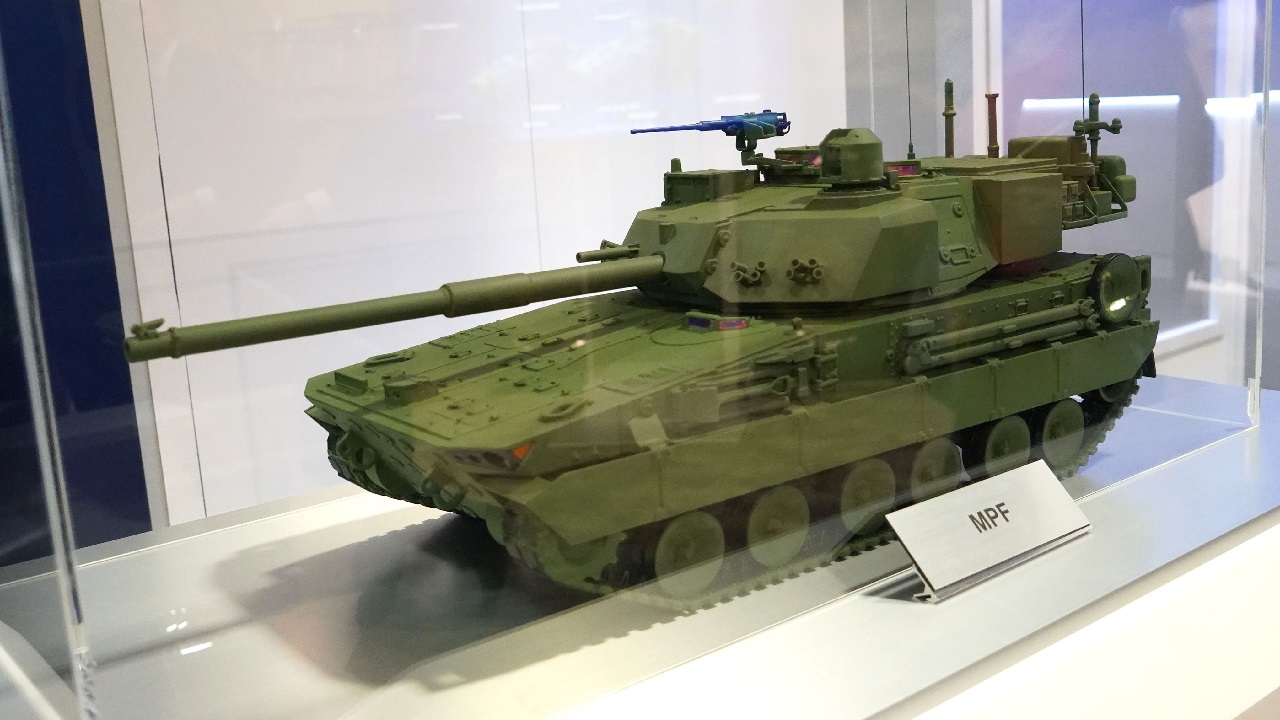The U.S. Army’s Brewing Plan to Reenter the Light Tank Field – The United States Army is about to take a new step into the light tank field, even if it is not keen on labeling its new armored vehicle a “light tank.” Developed under the “Mobile Protected Firepower” (MPF) program, this new armored vehicle is now on the cusp of serial production.
New Light Tank: The MPF Contract is Awarded
On June 28, the U.S. Army officially awarded General Dynamics Land Systems a contract to serially produce the MPF light tank. While the Army plans to procure 504 examples of the vehicle by 2035, General Dynamic’s $1.4 billion contract is for an initial batch of 96 vehicles. Currently, the Army expects to receive the first examples in a little less than two years from now, and to have enough to outfit a battalion by 2025. General Dynamic Land System’s primary competitor for the MPF contract was BAE Systems, whose bid was reportedly removed from consideration months prior to the final decision being made public.
The MPF field was narrowed down to the General Dynamics and BAE proposals in 2018, after which the models underwent soldier vehicle assessment to evaluate their effectiveness and fit in infantry brigade combat team formations. With development managed by U.S. Army Futures Command’s Next Generation Combat Vehicles Cross-Functional Team, the MPF is the first project of the command to advance to production, and the first new design vehicle fielded in 40 years.
What is the MPF Light Tank Capable of?
General Dynamics Land System’s contract-winning design is known as the Griffin II. Despite weighing a little more than half the weight of an M1A2 Abrams, the MPF’s turret and fire control system borrow heavily from the Abrams’ design. The tank is equipped with a 105 mm main gun as well as two external 7.62 mm and .50 caliber machine guns along with a crew of four and an external appearance that closely mimics that of a tank. Army leaders tend to dissuade use of the term “light tank’ to describe the MPF, since they seek to discourage the employment of the MPF as a tank. According to the U.S. Army, the MPF was not designed to take on other tanks in combat or be used in the same mission set which would be applied to an actual tank such as the Abrams.
“While informed by our experience of building a number of innovative ground combat vehicles, the MPF was designed from the ground up as a completely new vehicle,” said Kevin Bonner, Global Chief Technology Officer for General Dynamics Land Systems. “From the suspension to the propulsion and electronics, the MPF represents the U.S. Army’s next generation of combat vehicles.”
What is the Intended Role of the MPF Light Tank?
At its core, the MPF is designed to fill a specific niche. This is to provide offensive fire support to infantry brigade combat teams. At the moment, U.S. infantry brigade combat teams only have a selection light tactical vehicles equipped with TOW anti-tank missiles as their composite armored firepower support. The origins of the MPF project can be traced to an operational-needs statement submitted by the 82nd Airborne Division which identified an urgent need for a vehicle capable of supporting infantry brigade combat teams by spearheading offensive actions.
While its approval is still relatively recent, the MPF is entering service at a moment when Russia’s invasion of Ukraine has shown that armored vehicles still have a major role in modern warfare when correctly employed. Production of the system will now proceed, giving the first infantry units MPF in the coming years.
Wesley Culp is a Research Fellow at the Center for the Study of the Presidency and Congress. He regularly writes on Russian and Eurasian leadership and national security topics and has been published in The Hill as well as in the Diplomatic Courier. He can be found on Twitter @WesleyJCulp.
Editor’s Note: This article has been updated and includes new comments from General Dynamics.

